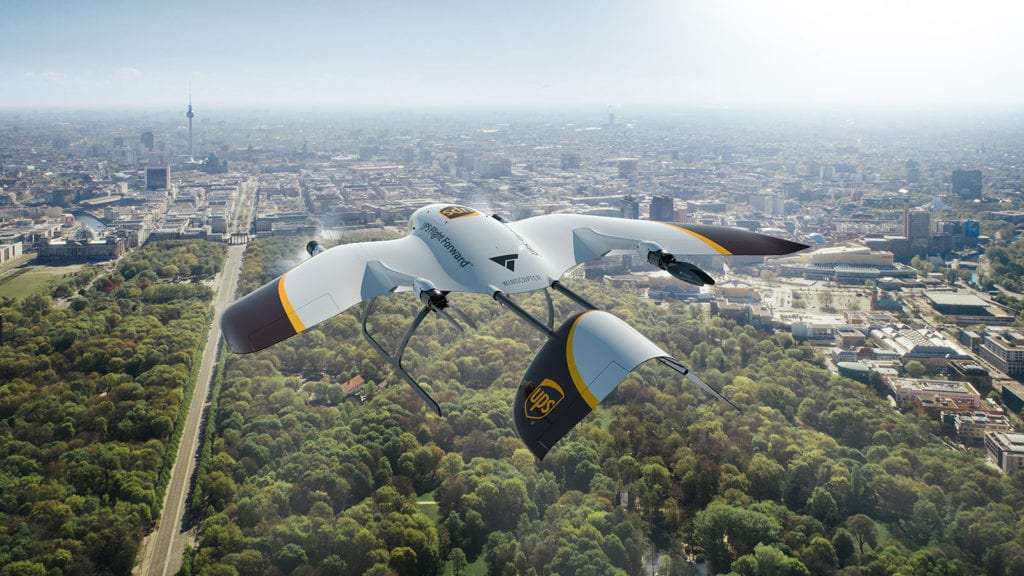
UPS’ drone delivery venture is partnering with German drone-maker Wingcopter to develop and certify new tiltrotor package delivery drones for a wide range of use cases. (UPS/Wingcopter)
UPS’ drone delivery venture is partnering with German drone-maker Wingcopter to develop and certify new tiltrotor package delivery drones for a wide range of use cases in the United States and internationally.
UPS Flight Forward, which earned the first Standard Part 135 drone air carrier certification from the Federal Aviation Administration in October 2019, has used Matternet’s M2 quadcopter for initial testing and limited medical deliveries since the company’s inception. Capable of carrying up to 4.4 pounds a distance of 12.4 miles, at speeds reaching 22 mph, the M2 has been employed by the Swiss Post as well as UPS to carry lab samples short distances, such as across a hospital campus.
But UPS’ partnership with Wingcopter suggests the company wants to drastically improve the performance of its future drone delivery fleet, switching from quadcopters to tiltrotors able to fly faster, more efficiently and longer distances, while minimizing fly-over acoustic pollution.
“The advantage of the quadcopter is that you can start and land in the smallest of spaces, which is essential for package delivery in populated areas,” a representative for Wingcopter told Avionics International. “The combination of the two drone types [VTOL and forward-flight] allows for a smooth transition from highspeed long-range flight into full-stop, allowing to land or, alternatively, to hover and lower a package through a winch mechanism without having to land. In that case, you don’t even need basic landing infrastructure.”
Wingcopter’s existing drones “feature vertical takeoffs and landings in tight spaces, transitioning to efficient, high-speed horizontal flight, enabling ranges suitable for a variety of uses,” according to the company, and Wingcopter has proven its ability to conduct beyond visual line-of-sight projects for customers.
“Drone delivery is not a one-size-fits-all operation,” said Bala Ganesh, vice president of the UPS Advanced Technology Group. “Our collaboration with Wingcopter helps pave the way for us to start drone delivery service in new use-cases. UPS Flight Forward is building a network of technology partners to broaden our unique capability to serve customers and extend our leadership in drone delivery.”
UPS and Wingcopter declined to confirm whether they intend to explore one or multiple new types of drones, but the delivery giant is already exploring applications beyond hospital campuses, including residential deliveries.
In the United States, there are still a number of regulatory challenges to be solved before large-scale residential drone delivery can take place, but the FAA is making progress, releasing its proposed rule for remote ID in December 2019 and clarifying the path to drone certification in February.
“We have learned a great deal from programs like the UAS Integration Pilot Program, specifically from the operations that have been conducted by [Alphabet subsidiary] Wing and by UPS Flight Forward,” said Ali Bahrami, FAA associate administrator for aviation safety, during a recent presentation with NASA on advanced air mobility. “But there is still much for us and the community as a whole to learn.”